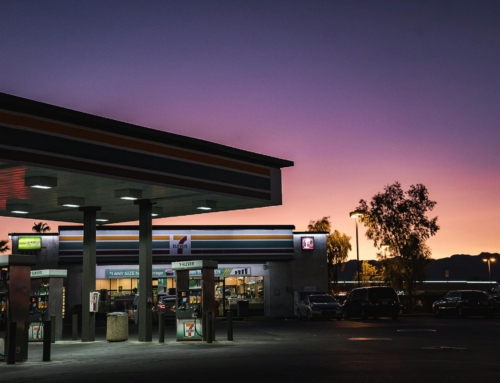This article was originally posted by Exchange Solutions and can be found here. Exchange Solutions provides retailers with innovative customer engagement and loyalty products that maximize customer lifetime value, customer satisfaction, and profitability.
Loyalty programs have been around since the 1980’s, when some of the first loyalty programs, such as American Airlines and Hilton Honors, were launched. Just as fashions come and go, trends in loyalty program design do too. “People don’t want soft rewards.” “People will not pay for a loyalty program.” “Points programs are dead!” Who doesn’t want to get on a plane first, have access to a pillow menu or get preferential treatment? Dorothy Hamill haircuts, parachute pants and pet rocks all had their moments, but there are some good loyalty design tenets that continue to stand the test of time.
1. More Experiential, Less Promotional. Give me reasons to interact with your brand or program through games, contests, or opportunities to provide information in return for personalization and relevancy. Brands that focus on promotional aspects are in a race to the bottom line with their least intelligent competitor. Experiences can be customized; promotions can be ripped off. As my old boss used to say, “Both coupons and crack begin with the letter ‘c’.”
2. Reducing Friction. Make your program hard to deal with and watch people desert in droves. Make your app an advertising platform instead of a personalized, customized dashboard and watch interactions fall off a cliff. Nothing is more frustrating than receiving an email from a retailer with my loyalty stats with no direction on where to go next. If you tell me that I have rewards available, then provide a link where I can go redeem them or at least a link to the list of rewards that I can claim. Let me redeem my rewards easily, which, with one click, can be applied to the shopping basket I’m actively filling! This is why the loyalty programs that required that consumers do the bulk of the work, such as scan their receipt to log their visit or manually enter codes to earn points, are usually dismal failures. Consumers on the whole are lazy, so make it easy to use your program. Want a lesson in ease? Press the One-Click button on Amazon.
3. Mobile-First Customer Experience. If living through a global pandemic has changed anything, it’s that businesses that didn’t adapt to the smartphone way of life likely aren’t going to be around when it all shakes out. The world we are living in now values frictionless ecommerce, contactless payments, and delivery choice. Want examples of which companies are doing this well? Try the Starbucks or Chick-Fil-A apps. Want to see a company that has almost totally ditched anything but mobile? Check out Chick-Fil-A’s loyalty web pages, which are strictly informational. They want you interacting on their app, and it shows with the easy, intuitive interface.
4. Cross-Channel Contact Optimization. If a company is truly serious about rewarding their best customers with a loyalty program, then the program must be integrated throughout the organization, across all channels. (Aveda, why for years did you make me go to a separate site to participate in your Pure Privilege loyalty program?) The basic channels to cover are email, receipts, SMS, in-app messaging, direct mail, etc., but to make it really sing, overlay your communications with personalization and relevant offers.
5. Marketing Automation through Advanced Analytics and AI. Personalization is the name of the game, especially with younger consumers who have been raised in an environment where exchange of information results in personalized offers and relevant content. People expect a quid pro quo these days. Gone are the days where a company, such as your bank, just saw you as discrete products, like mortgage or checking, instead of an entire portfolio. Today marketing automation can pick up your browse behaviors, search history and all of the other digital traces you leave around the web to serve up retargeted ads, items of interest and showcase the items you didn’t know you needed! (Do you ever wonder if Facebook is listening to you?)
6. Paid Loyalty Programs. Many people say that they would never pay for a loyalty program, but I say, “Are you a member of Amazon Prime?” About 1/3 of the US population, or 112 million people, would say yes. Paid programs aren’t dead. In reality, the consumer is paying for their own discounts, but the value proposition is what sets programs apart. Done right, a paid program can be a solid self-funding revenue stream, plus help you identify an engaged group of hand-raisers, since consumers who aren’t completely rah-rah about your brand aren’t going to pay for the privilege of being in a paid program. Use this cash stream to treat the paid members extra-special with exclusives and better promotions to ensure that they re-up without hesitation when the time comes.
7. Tiers.The biggest mistake a company can make is approaching their loyalty program with a “one size fits all” mentality. Tiers are a fantastic mechanism for separating your low-values from your high-values and allowing you to parse out your marketing accordingly. When thinking about loyalty program design, many executives have the “no, all customers are created equal” mentality. Well, that’s false. Just as you have a favorite child or pet, you should have favorite customers too—and those would be the ones who bring the most value to you—through the highest margins, the largest lifetime value, or the most referrals, as examples. Think of tiers as aspirational paths. Do you want more of the customers who take the path less traveled? Or more of the customers who are ready to run up the mountain for you to reach top status? Reward accordingly, my friends.
Many companies have lost their way in terms of using a loyalty program as it’s supposed to function, which is to reward your best customers, not necessarily *all* of your customers. Before loyalty programs became ubiquitous, they were designed to reward the top 10-15% of customers. Over the years, loyalty programs have evolved to become all-encompassing data collection powerhouses, which allow companies to expand focus past the top 10-15% in order to grow that group of best customers. Make sure to keep these top trends in mind when building or redesigning your program, and you’ll be on the right path.










Leave A Comment